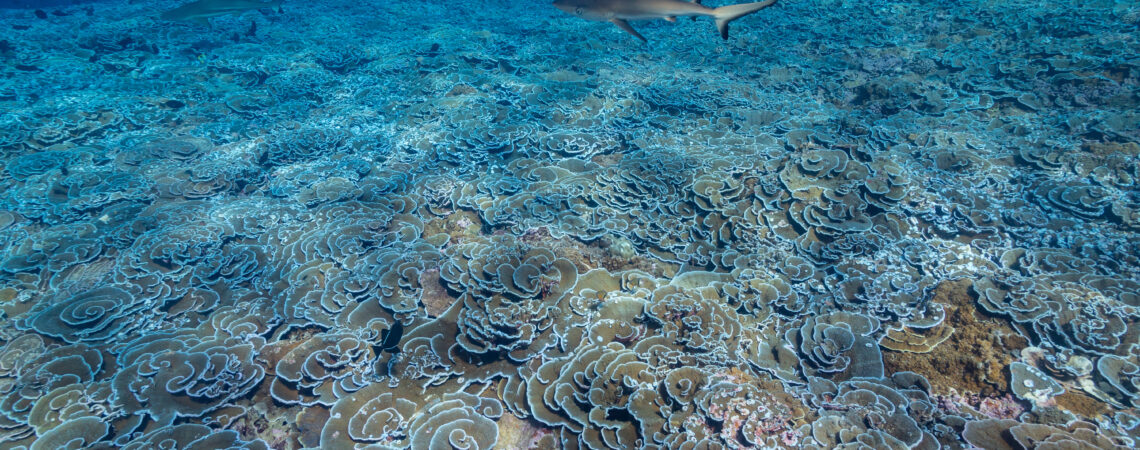The world is waking up to a surprising and previously underestimated source of carbon emissions: bottom trawling. This fishing method, involving the dragging of heavy nets across the ocean floor, has been revealed as a significant contributor to atmospheric carbon pollution. In this article, we’ll delve into the findings of the groundbreaking study, “Atmospheric CO2 emissions and ocean acidification from bottom-trawling,” and explore the positive implications of addressing this underwater carbon culprit.
In the vast expanse of our oceans, a hidden environmental player has emerged from the depths—a previously unnoticed source of atmospheric carbon emissions: bottom trawling. Often considered an essential but ecologically impactful fishing practice, bottom trawling involves dragging heavy nets across the ocean floor, leaving a trail of ecological disruption in its wake. While the adverse effects on sea life and habitats were known, a groundbreaking study, “Atmospheric CO2 emissions and ocean acidification from bottom-trawling,” has thrust bottom trawling into the spotlight for an unexpected reason: its significant contribution to atmospheric carbon pollution.
This revelation comes at a critical juncture as the global community intensifies efforts to reduce emissions from well-established sources like fossil fuels and deforestation. The study’s findings, published in Frontiers in Marine Science, unravel a previously hidden dimension of our impact on the planet. As we strive to comprehend and combat climate change, understanding the scale and implications of bottom trawling’s carbon footprint becomes paramount. It challenges us to reassess our approach to sustainable fishing and prompts a reevaluation of the intricate relationship between human activities and the health of our oceans and atmosphere.
Unveiling Bottom Trawling’s Carbon Footprint
While the environmental community has long recognized the destructive nature of bottom trawling on sea life and habitats, the recent study sheds light on its hidden carbon footprint. Comparable to the annual emissions of the entire global fishing fleet, this newfound source of atmospheric carbon has far-reaching consequences. Understanding the scale of the issue is the first step towards crafting effective solutions.
From Ocean Depths to the Skies
What makes bottom trawling particularly concerning is the time it takes for its underwater carbon emissions to reach the atmosphere. Over a span of approximately ten years, more than half of the carbon dioxide produced by this fishing practice makes its way into the skies, contributing to global warming. This revelation underscores the urgency of addressing bottom trawling to curb its long-term impact on our climate.
Identifying Regions with High Carbon Emissions
The study identifies specific oceanic regions as hotspots for elevated carbon emissions due to bottom trawling. From the East China Sea to the Baltic and North Seas, and the Greenland Sea, these areas require targeted attention. While Southeast Asia, the Bay of Bengal, the Arabian Sea, parts of Europe, and the Gulf of Mexico are also suspected hotspots, further data is needed for a comprehensive assessment. Identifying these regions is a crucial step towards effective global conservation efforts.
Policy Gaps and Urgent Action
Surprisingly, many countries do not currently account for bottom trawling’s substantial carbon emissions in their climate action plans. Recognizing this gap is the first step towards effective policy changes. Urgent action is needed to integrate the impact of bottom trawling into global climate strategies. The silver lining is that by reducing bottom trawling emissions, we can achieve immediate benefits, curbing the flow of carbon into the atmosphere and mitigating its impact on our planet.
The Multi-Faceted Impact of Bottom Trawling
While carbon emissions take center stage in this study, it’s crucial to recognize that bottom trawling has broader implications. Often referred to as ‘marine deforestation,’ this fishing practice not only affects carbon but also biodiversity and sustainability. The study suggests that the large-scale impact of bottom trawling should prompt comprehensive policy efforts that consider all facets of its environmental impact, ensuring a holistic approach to ocean conservation.
A Call to Action for Our Oceans and Atmosphere
In the wake of the revelations surrounding bottom trawling’s significant carbon emissions, a compelling call to action echoes across the vast expanse of our oceans. The findings of the study present both a formidable challenge and a unique opportunity—one that demands immediate attention and collective commitment.
The challenge lies in rectifying the current oversight in climate action plans worldwide. Despite the undeniable impact of bottom trawling on our oceans and atmosphere, this ecological menace has remained largely absent from policy considerations. It’s time for governments, environmental organizations, and the global community to acknowledge the gravity of this underwater carbon culprit and integrate its implications into our strategies for a sustainable future.
Simultaneously, the study offers a distinct opportunity to implement solutions that can yield immediate and positive outcomes. By addressing bottom trawling, we not only protect and rejuvenate marine ecosystems but also make a substantial contribution to the broader global fight against climate change. The power to turn the tide on bottom trawling rests in our hands, and it is incumbent upon us to seize this opportunity for positive change.
As we stand at this crossroads, the call to action is clear: implement policies that account for bottom trawling’s environmental impact, invest in sustainable fishing practices, and raise awareness about the need for responsible ocean stewardship. It’s a collective responsibility to ensure a sustainable and vibrant future for our oceans and skies—an opportunity we must embrace for the well-being of our planet and generations to come.

